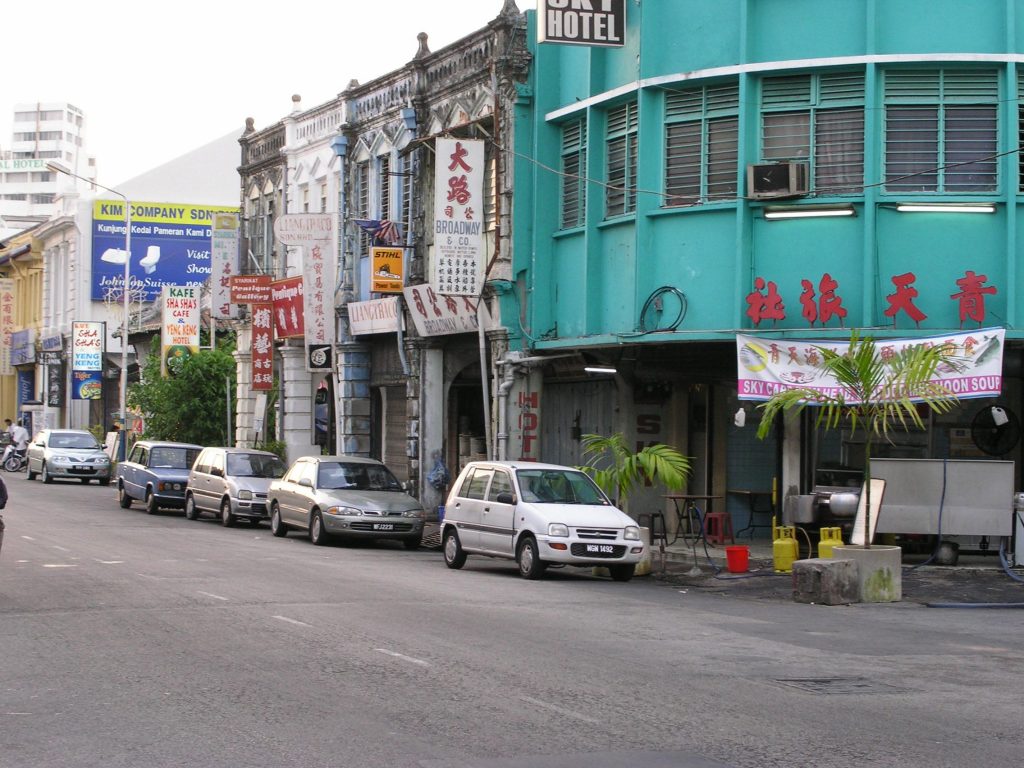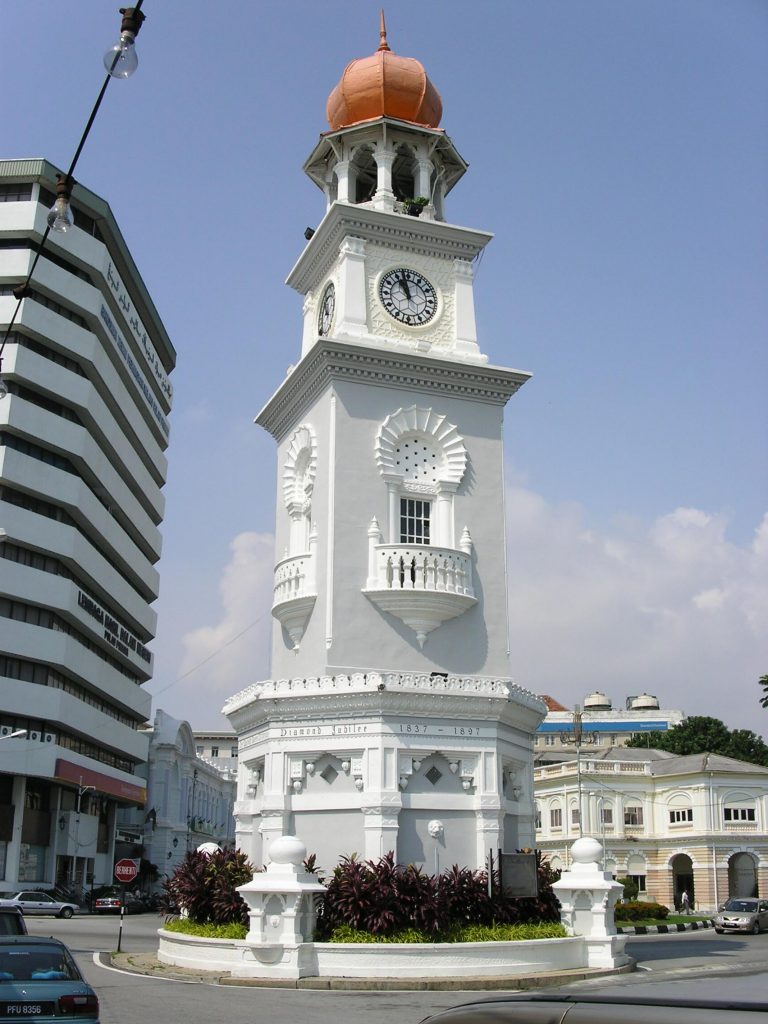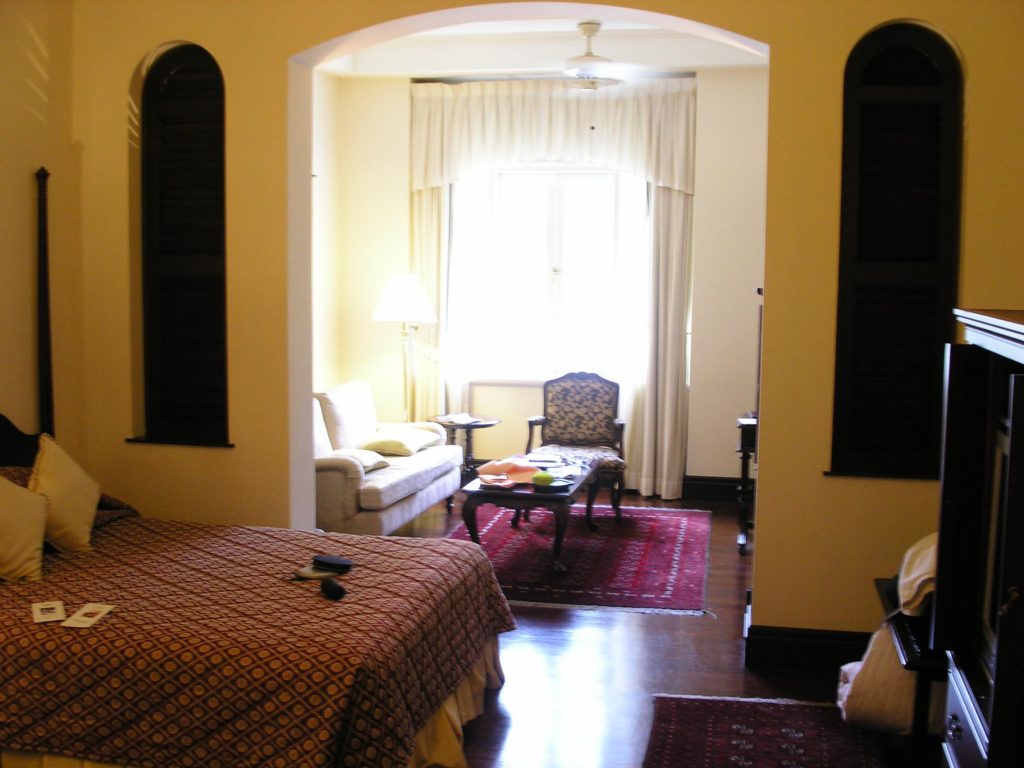I’ll attempt to update and add to this post as time goes on keeping it somewhere near the top.
Food
In general really great, especially when you know what your getting. A mixture of spicy heat, strong herbs, salty and sour flavours usually served with rice. Noodles, in particular as noodle soup, are also available and will be the only time you are provided with chopsticks. The bulk of dishes here are eaten with fork and spoon.
If ordering western food beware as although their intentions are good the locals don’t always have the right idea; my bacon cheeseburger came as a toasted bun with cheese, ham and salad, but no burger.
Unexpectedly (to me at least) the most reliable high quality non-native food here is Indian. The best meal I had in Laos was chicken tikka, a vegetable curry and a garlic nan all cooked to perfection. I found this trend in several countries so you’re sorted if you’re a curry’holic. In Malaysia the local cuisine has a distinct Indian influence.
The only downside (for me at least) is the pervasiveness of egg. If I forget to ask it to be left out of a fried rice dish I’ll have to order again, it sometimes sneaks into a fried noodle dish when I least expect it and once was raw in a Tom Yam soup.
Beer
A most important subject. In Lao its easy, Beer Lao and generally only Beer Lao, is available everywhere for around US$0.70 a 600ml bottle. The label claims 5% alcohol but often feels like more; I’m sure the alcohol content varies between batches. Luckily enough its the most drinkable beer in the region.
Cambodia is a little more complex and I’ve yet to fully figure it out as there are several local brews of which 2 are know as Ankhor and Anchor. This leads to confusion about what you’ve ordered and are drinking, especially after a few. In strength and flavour they seem somewhere between the Thai and Lao styles. Also available, at some roadside stalls, are a range of beers in Coke size tins including a lager and a stout. They are all around 8% alcohol and I missed my opportunity to try them, much to the relief of my head and liver. Glasgow tramps can be assured of feeling at home here.
Thailand is interesting with a full blown beer war. First there is Singha, the best known Thai beer outside the country, which has around 6% alcohol, a slightly hoppy taste and sells for about $2 per 600ml bottle. Carlsberg set up a half owned joint venture to brew here under the Carlsberg name with a beer similar to Singha but lighter in taste. Singha responded by calling itself the patriotic beer and Carlsberg counters by launching Chang.
Chang quickly established itself as the best selling beer in Thailand and for obvious reasons. Its got 7% alcohol and a 600ml bottle sells for US$1.25 therefore giving it a lot more Bang for the Baht. This more than overcomes the problems that it doesn’t taste great and a night on the stuff leaves a serious imprint on the next day. The Singha mob then releases Leo which also has 7% alcohol and sells for US$1.35, the better flavour being well worth the extra dime.
Malaysia comes as a shock after the previous three. As a Muslim country alcohol will not be available in all restaurants and when it is it will be a similar price or more expensive than at home. Tiger & Carlsberg are the most common brands, especially on draft. The Carlsberg has a bit of an after taste so I’d recommend the Tiger.
It’s worth noting that when reasonable to good rooms are available from US$5 to US$10 and meals for less than US$1, that beer can quite quickly become a significant element in a travellers budget. For the locals, who exist on far smaller daily budgets than travellers, it must be a luxury, explaining the popularity of local rice spirits like Lao Lao.
Lao Lao tastes like a cross between Sake and Vodka and therefore mixes easily. Available to rich tourists for US$1 a bottle, which are normally filled from large plastic barrels as you watch, it has a high destructive potential (as me and a couple of Irish lads can attest).
Transport
Varies a lot in this region, Thailand’s & Malaysia’s is generally great, whilst Cambodia roads are dreadful and you can outrun the average speed of their trains. In Thailand the 3 wheeled tuk-tuk is the key round town vehicle, in Lao the tuk-tuk goes everywhere and comes in larger sizes and in Cambodia you’re perched on the back of a motorbike with a driver who doesn’t know where you want to go and assumes you’ll guide him.
What is common to them all is that the buses will be rammed full and will depart slightly late. 200 yards down the road the bus will stop for fuel and will occasionally manage a stop before this to rearrange luggage in the racks. Despite being a several hundred kilometre journey taking many hours the bus driver will stop every 2 minutes in the town of departure to pick up passengers who didn’t go to the bus station. This is understandable as bus stations here are invariably located several km from the centre of town and you’ll need a tuk-tuk to get there. The tuk-tuk will generally cost a significant fraction of the bus ticket.
If the route goes though mountainous territory you will quickly find that the Asians get motion sick easily. All of a sudden you find their heads ducking out open windows or filling little plastics bags (the buses often have a stock of these hanging on the handrails) which are then thrown out of the window. I’m sure I’ve even seen the driver up-chuck once.
Towns
If old and not flattened by war they will have some lovely architecture and seems to consist mainly of Wats (temples) and markets. If in regions that have received the attention of B52’s they will have buildings that make you want to forgive Western architects of the 1970’s, far fewer Wats and still the ever present markets.
Music
Not a strong point this. In Thailand, Laos and Cambodia most public music, especially where you are trapped on boats and buses, is dreadful Thai karaoke music played on VCD machines. Imagine an endless sequence of crappy love ballads, accompanied by crappy soft focus videos with the lyrics (in a script you can’t read) being coloured in as the song is sung. Now imagine being stuck with this for hours at a time; one song is distressing enough, several push you to the edge of sanity. Thankfully it’s unusual for others to sing along, except for one horrific occasion in Burma when the family running the cafe I was eating at had a sing along. Bring earplugs, your own music or both.
The situation on Thailand is improving with most traveller hangouts playing a reasonable selection of tunes, though trendier places for locals will tend towards the tacky “Britney et all” style of pop.
Plumbing & electrics
Why are they a mixed topic? Because several places I have been don’t necessarily keep them apart. One shower in Laos had an unsealed switch within 2 feet of the shower head, and I could see the copper in the switch!!! Both are technical skills that haven’t transferred fully to the poorer countries; things just aren’t done as you would expect them at home.
The plumbing will leak. Luckily all toilets / bathrooms are designed to have wet floors and have drains in the corner. In all public toilets the floor will be awash for two reasons other than the leaks :
1) they don’t tend to use toilet paper, you clean yourself with your left hand and clean it with a small shower head next to the toilet
2) most toilets don’t flush. A tap fills a basin and you scoop water from that to flush the toilet manually. Its not a foolproof process, especially in poor light, after a few beers and in a hurry to depart ASAP. I don’t understand why they do this, having fitted a basin and got the water to it you’ve done a lot of the work in fitting a proper flushing toilet.
Of course many of the toilets are not as you recognise them at home. They don’t have a seat, just two foot pads either side of a porcelain hole you squat over. Trust me, the first time you come across one is an experience you are unlikely to forget. Also many of these are attached to drainage systems unable to cope with toilet paper so you’re meant to dump you used tissue in a bin.
Its worth carrying a few of those small packs of tissues with you in case you get caught short. Nothing is going to make you feel worse about a stomach upset than it forcing you to learn and use the local method of cleaning yourself.
Litter
Have to mention this, particularly for Lao. Remember those plastic bags I mentioned above getting thrown out of bus windows. Its not only those bags and buses, its everything from every vehicle. Soon many of the roads the will have little kerbs of rubbish and its a definite blot on the landscape.



















